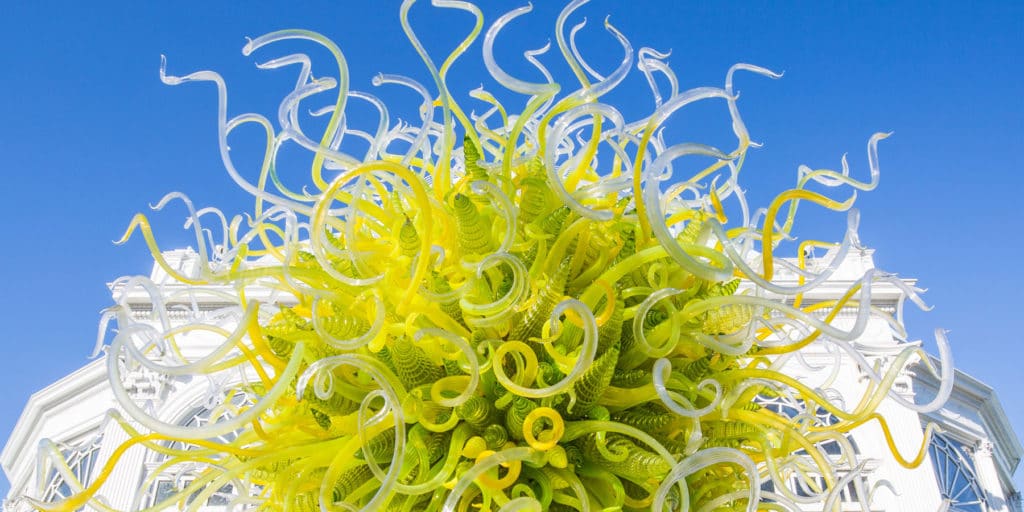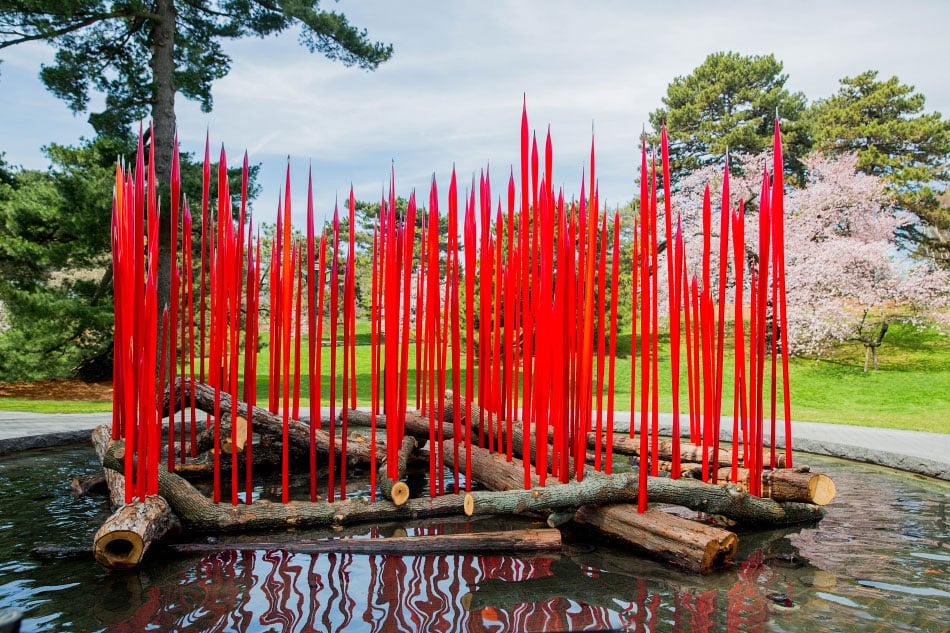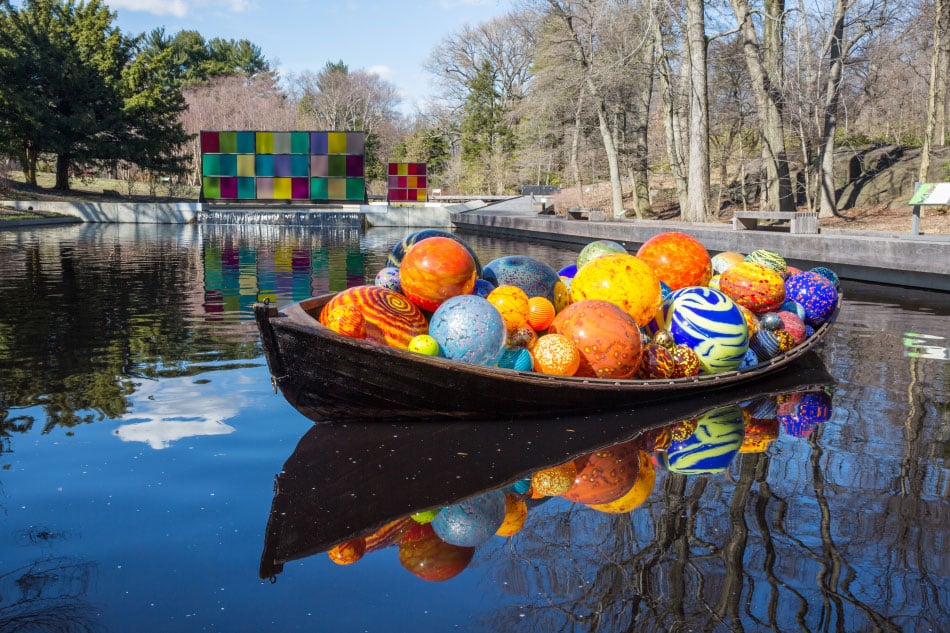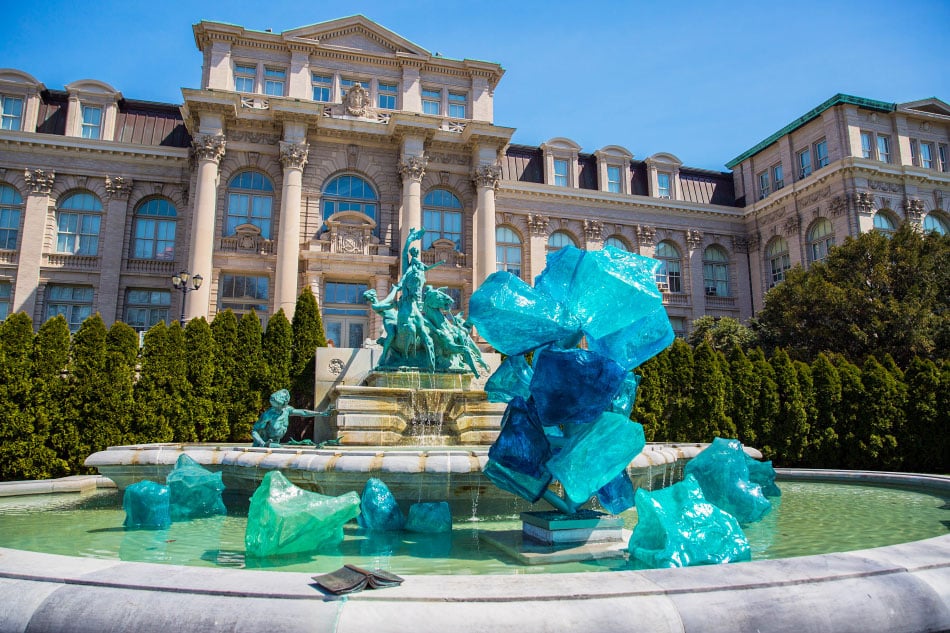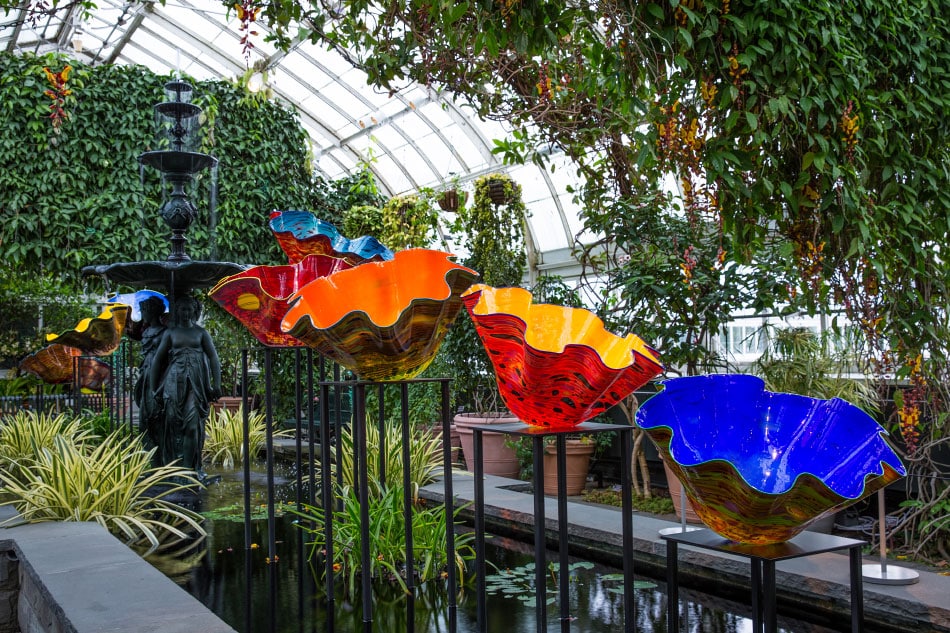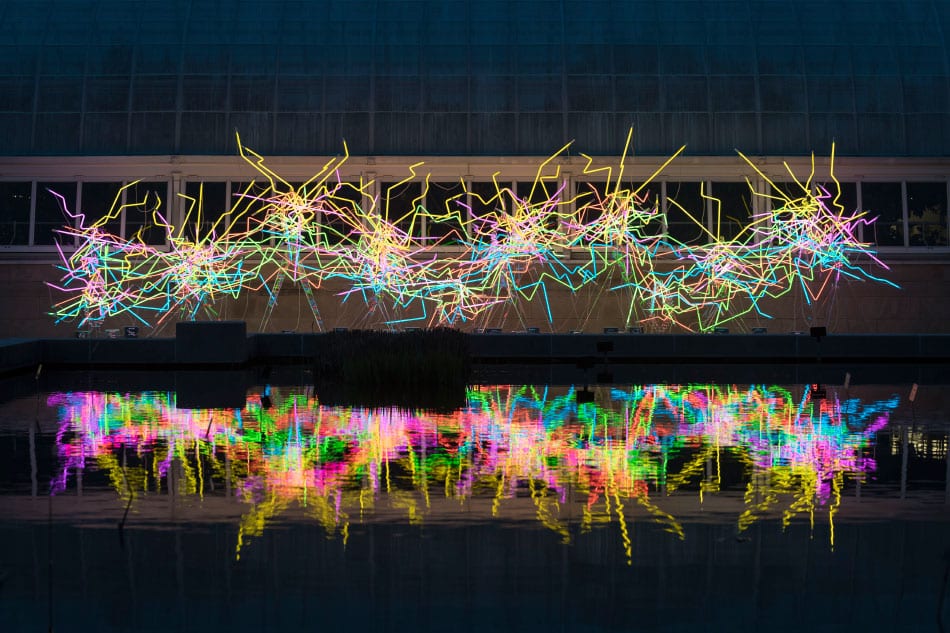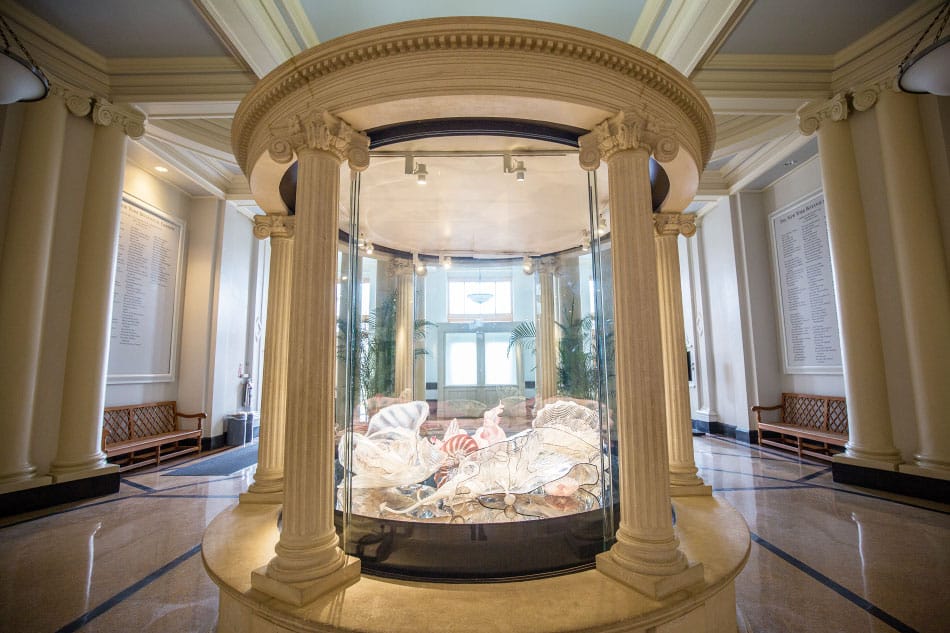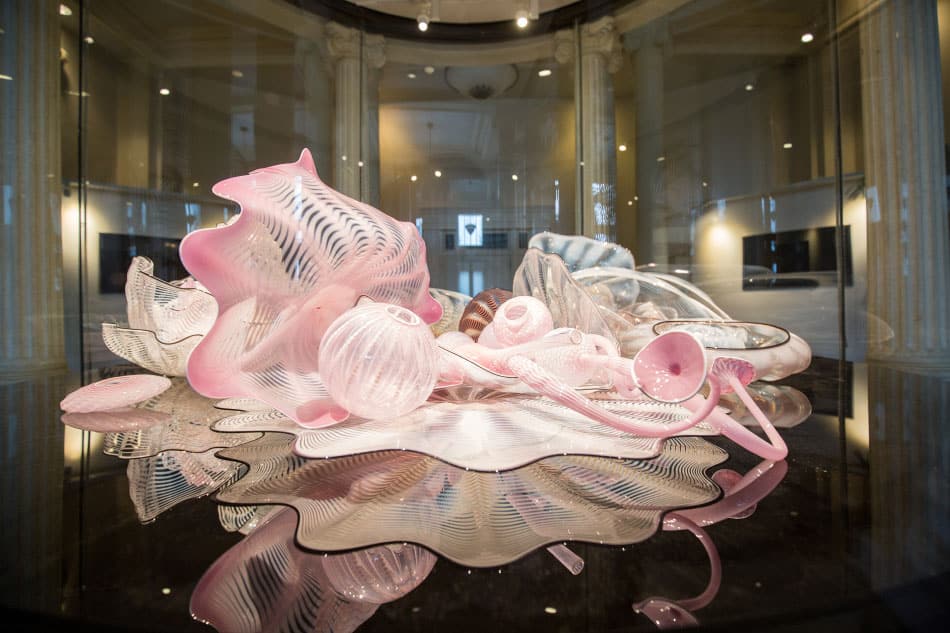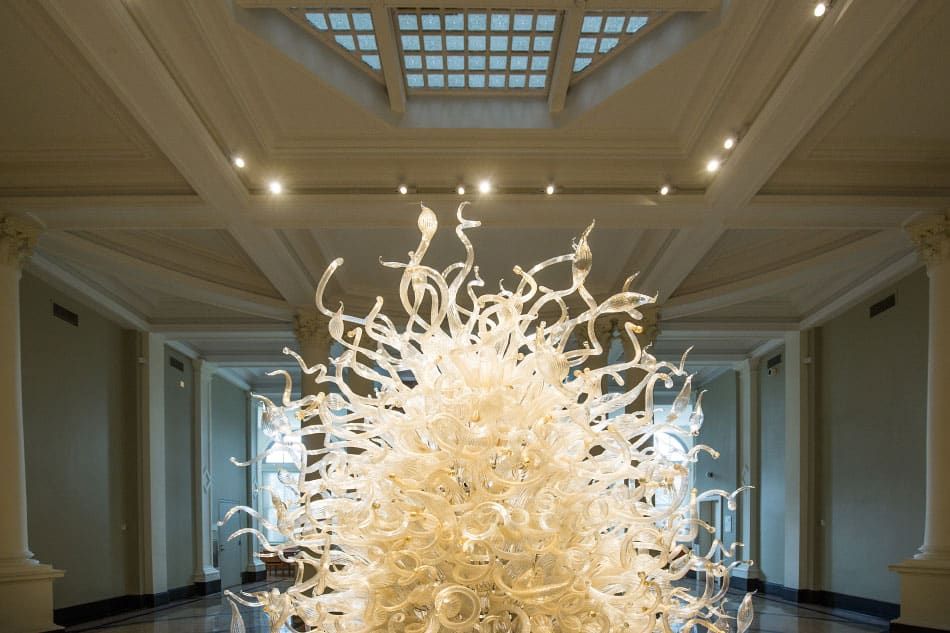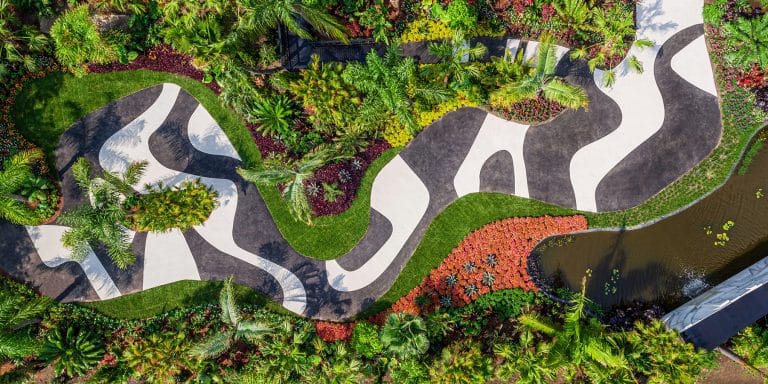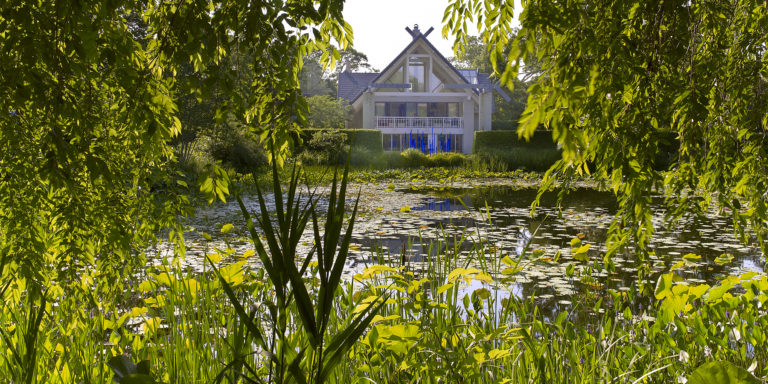
May 15, 2017The New York Botanical Garden’s new show, “CHIHULY,” features Dale Chihuly’s glass sculptures scattered throughout the garden’s indoor and outdoor spaces, including White Tower with Fiori (above) and Sol de Citron (top); all works shown are from 2017. All photos courtesy of The New York Botanical Garden
The New York Botanical Garden, one of the city’s great treasures, is a triumph of design and a treat for the senses all by itself. Since last month’s opening of “CHIHULY,” the 250-acre garden has also become part of an enormous exhibition that creates an exuberant dialogue between glass artist Dale Chihuly’s creations and its own trees, flowers and grand, Victorian-style conservatory. The show, which runs through October 29, includes nearly two dozen monumental installations by Chihuly, as well as drawings and early works that trace the arc of his artistic practice, in which he almost single-handedly brought studio glass out of the studio and into the popular consciousness.
Among the pieces on display are the kinds of crowd-pleasers that have made the artist famous — hand-blown glass sculpture in organic shapes and brilliant colors that evoke flowers or sea creatures, for instance — as well as new works. Among the latter are three “Koda Study” pieces inspired by his landmark 1975 installation (a collaboration with Seaver Leslie), which was composed of sheets of stained glass and engaged the surrounding landscape at Artpark, in Lewiston, New York, plus pieces realized in neon, a medium that Chihuly pioneered in the 1960s.
Chihuly, a native of Tacoma, Washington, became interested in glass while studying interior design at the University of Washington. After graduating, in 1965, he continued his studies at the University of Wisconsin and the Rhode Island School of Design, where he later established a glass program. A 1968 Fulbright fellowship took him to Venice and to the factory of the famed glassmaker Venini, where he learned the importance of the team approach to glassblowing, which has become a hallmark of his own practice. In 1971, Chihuly cofounded the influential Pilchuck Glass School, in Stanwood, Washington. In the last two decades, his work has been the subject of several major exhibitions and installations in Venice, Jerusalem, Canada and several locations in the U.S., including the 2006 “Chihuly at the New York Botanical Garden.”

Sapphire Star
That show was a blockbuster, attracting a record number of visitors during its June-through-October run. The garden is confident that the new show will be an even bigger success. But it has opened in a very different NYBG, according to Todd Forrest, its vice president for horticulture and living collections. For one thing, he explains, one of the largest sites, the three-and-a-half-acre Native Plant Garden, didn’t exist in 2006; now, it houses two “Koda Study” pieces, as well as one of Chihuly’s signature boats filled with blown-glass floats. “The very geometric architecture of the Native Plant Garden contrasts with the wildness of the plants, and it’s a bold move to create art pieces within such a strong space,” Forrest says.
The NYBG learned from the 2006 exhibition that the more seasons traversed, the better. Since this show opened in April instead of June, visitors can “see the landscape waking up,” Forrest says. It “will trace many more seasonal changes,” including those in the light, he continues. “Chihuly’s giant glass flowers will work in concert with actual flowers. In the autumn, they will vie with the fall colors.”
Some pieces in the current exhibition recall those displayed earlier. A new multicolored neon sculpture in the courtyard of the Enid A. Haupt Conservatory, for instance, riffs on the artist’s first Neon Tower, which was in the previous show. And in a direct homage to the 2006 exhibition, Chihuly has reprised his Blue Herons, moving them from their original location in the Tropical Pool to the conservatory’s soaring interior. In the Mertz Library Building, along with his drawings, Chihuly is presenting a group of his famous “Fire Orange Baskets,” evocations of Northwestern Native American basketwork that he first developed in 1977.
Chihuly’s pieces, says the NYBG’s Todd Forrest, “feel as if they had formed rather than been made. You’re awash in the scale and intensity of an incredible spectacle in both the work and in the garden.”
Even more important, says Forrest, the 2006 exhibition “taught us that if we supply the content, we can get new visitors to relate to the garden. We started to explore the way we did exhibitions.” The result was a number of well-received installations based on subjects like Charles Darwin, Claude Monet, Frida Kahlo and American Impressionism. “We felt we could do better justice to Dale’s work,” Forrest adds, noting that the garden decided, “Let’s see how much more beautiful, sophisticated and compelling we can make it this time.”
Like the 2006 event, however, “the new show is so inspiring because it reminds people of the things they love in nature,” he stresses. Chihuly’s pieces, with their organic shapes, “feel as if they had formed rather than been made. You’re awash in the scale and intensity of an incredible spectacle in both Dale’s work and in the garden.”
In addition to the exhibition’s daytime hours, a series called Chihuly Nights is offering visitors the chance to see the installation, with its brilliant colors, illuminated in the evening. A rotating lineup of performing artists and musicians is further adding to what promises to be a memorable experience.
